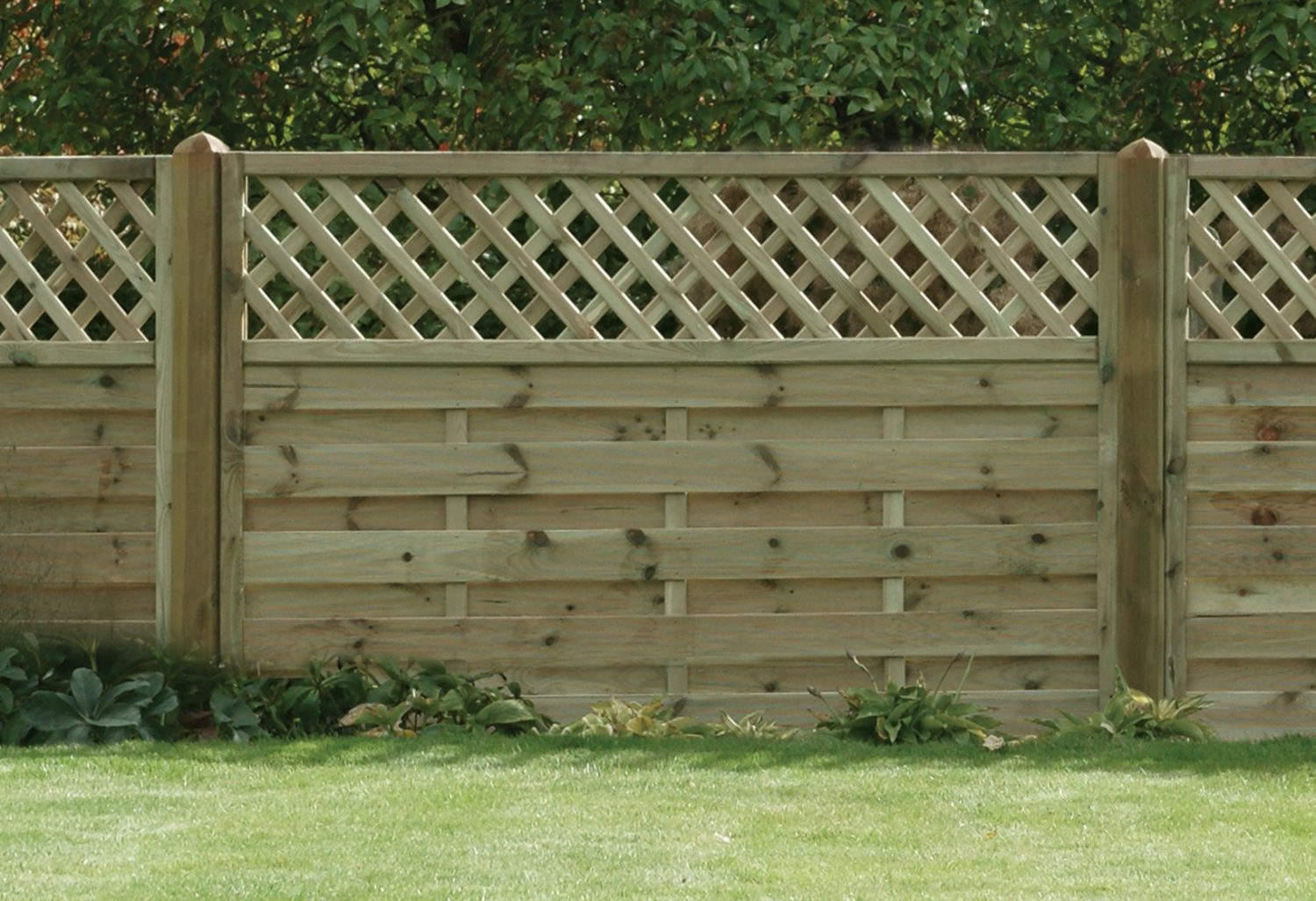Looking to enhance your privacy while adding a touch of style to your property? Lattice fences might just be the solution you’re looking for. In this article, we’ll explore the world of lattice fences and how they can increase privacy without compromising on aesthetics. Whether you’re considering a wooden lattice fence, vinyl lattice fence, or even a metal lattice fence, we’ll cover the benefits, maintenance requirements, and suitability for different purposes. We’ll also delve into factors such as size and shape, providing practical guidance on how to choose the right lattice fence for your specific needs. By the end, you’ll have a comprehensive understanding of lattice fences and the knowledge to make informed decisions when it comes to installing the perfect fence for your property. Plus, we’ll include a list of common questions and answers to address any further inquiries you may have about fences in general.
1. Introduction to Lattice Fences
1.1 What is a lattice fence?
A lattice fence is a type of fence that features crisscrossed strips of material, known as lattice panels, creating an aesthetically pleasing pattern. The lattice panels are typically made of wood, vinyl, or metal and can be used as a complete fence or as a decorative element incorporated into an existing fence. Lattice fences are known for their unique design that offers both privacy and visual appeal.
1.2 Why choose a lattice fence?
There are several reasons why you might choose a lattice fence for your property. Firstly, lattice fences provide a level of privacy without completely blocking out the view or sunlight. The crisscrossed design allows for air circulation while still offering some concealment. Secondly, lattice fences are visually appealing and can enhance the overall look of your outdoor space. Lastly, lattice fences are versatile and can be used in various applications, such as enclosing a garden, creating partitions, or adding decorative elements to your property.
1.3 Common uses of lattice fences
Lattice fences find common uses in both residential and commercial settings. Some of the common applications include:
- Privacy screens: Lattice fences can be used to create privacy screens on balconies, patios, or in backyard spaces, providing a sense of seclusion without completely blocking the view.
- Garden enclosures: Lattice fences are ideal for enclosing gardens or specific areas within a garden, offering support for climbing plants like ivy or roses.
- Decorative accents: Lattice fences can be used as decorative accents on gates, pergolas, or as inserts within traditional fence designs, adding a touch of visual interest and elegance to the overall structure.
- Partition walls: Lattice fences can be used as partition walls to divide large outdoor spaces or to create separate areas within a property, such as separating a pool area from the rest of the yard.
2. Various Designs of Lattice Fences
2.1 Traditional lattice fence design
The traditional lattice fence design features a crisscross pattern created by evenly spaced horizontal and vertical lattice panels. This classic design offers a timeless look that complements various architectural styles and blends well with different surroundings. Traditional lattice fences can be customized with different panel widths and heights to suit your individual preferences and needs.
2.2 Diamond lattice fence design
The diamond lattice fence design is characterized by diagonal lattice panels that create a diamond-shaped pattern. This design adds a unique and visually appealing element to any outdoor space. Diamond lattice fences are often used to create decorative accents on gates, pergolas, or as stand-alone fence sections. They can also be combined with other fence types, such as solid panels, for added privacy and aesthetic appeal.
2.3 Square lattice fence design
The square lattice fence design features square-shaped lattice panels, offering a modern and clean look. This design is popular in contemporary residential and commercial settings. Square lattice fences can be used to create privacy screens, partition walls, or as decorative accents within larger fence structures. The square shape of the lattice panels adds a geometric element that enhances the overall design aesthetic.
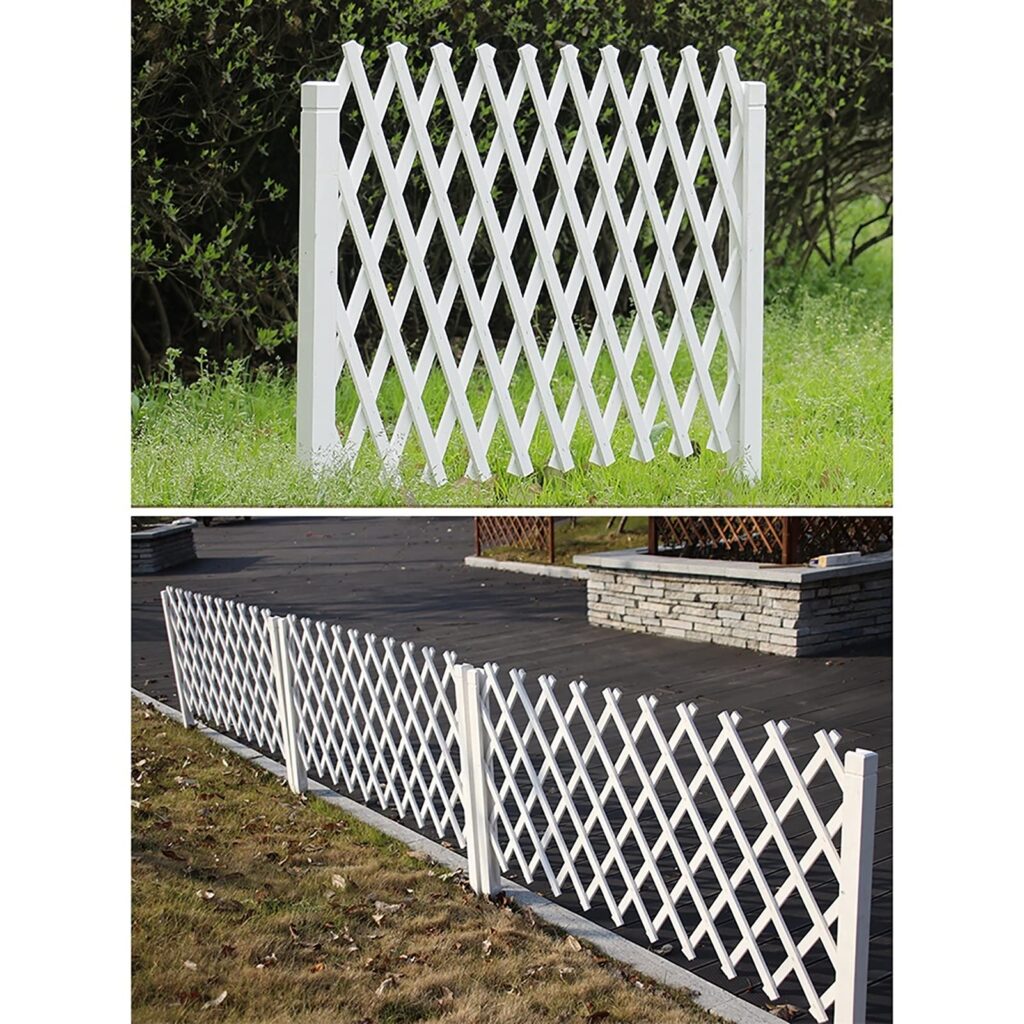
3. Materials for Lattice Fences
3.1 Wood lattice fences
Wood lattice fences are a popular choice due to their natural and rustic appearance. They can be made from various types of wood, such as cedar, pine, or redwood, each with its own unique characteristics and durability. Wood lattice fences can be stained or painted to match your desired aesthetic and can be customized to fit your specific property requirements. However, it’s important to note that wood lattice fences require regular maintenance, including sealing, painting, and occasional repairs to ensure their longevity.
3.2 Vinyl lattice fences
Vinyl lattice fences are a low-maintenance alternative to wood lattice fences. They are highly durable, resistant to rot, fading, and insect damage. Vinyl lattice fences also offer a wide range of color options, allowing you to choose a shade that complements your property’s exterior. Additionally, vinyl lattice fences are easy to clean and require minimal upkeep. They are a popular choice for homeowners looking for a long-lasting and hassle-free option.
3.3 Metal lattice fences
Metal lattice fences, often made of aluminum or wrought iron, offer a more decorative and ornamental option. These fences provide both security and aesthetic appeal. Metal lattice fences can be customized with intricate patterns and designs, adding a touch of elegance to any property. While metal lattice fences may require more regular maintenance, such as repainting or rust prevention, they offer excellent durability and longevity.
4. Benefits of Installing a Lattice Fence
4.1 Increased privacy
One of the primary benefits of installing a lattice fence is the increased privacy it provides. The crisscrossed lattice panels partially obstruct the view while still allowing light and airflow to pass through. This makes lattice fences an ideal choice for homeowners who want some privacy without feeling completely closed off from the outside world. By strategically placing lattice fence panels, you can create secluded areas within your property while maintaining an open and inviting atmosphere.
4.2 Enhanced aesthetic appeal
Lattice fences are known for their visual appeal and can enhance the overall look of your property. Whether you opt for a traditional, diamond, or square lattice design, the intricate pattern adds a decorative element that stands out. Lattice fences can be used to create focal points, accentuate certain areas, or simply add a touch of elegance to your outdoor space. With the wide range of material options and customizable designs available, you can choose a lattice fence that complements your property’s style and enhances its curb appeal.
4.3 Versatility in design
One of the key advantages of lattice fences is their versatility in design. Whether you prefer a more traditional or contemporary aesthetic, lattice fences can be customized to meet your specific design preferences. With various lattice panel widths, heights, and patterns available, you can create a personalized fence that perfectly suits your needs. Lattice fences also work well in combination with other fence types, such as solid panels or picket fences, allowing you to create unique designs that blend different elements together.
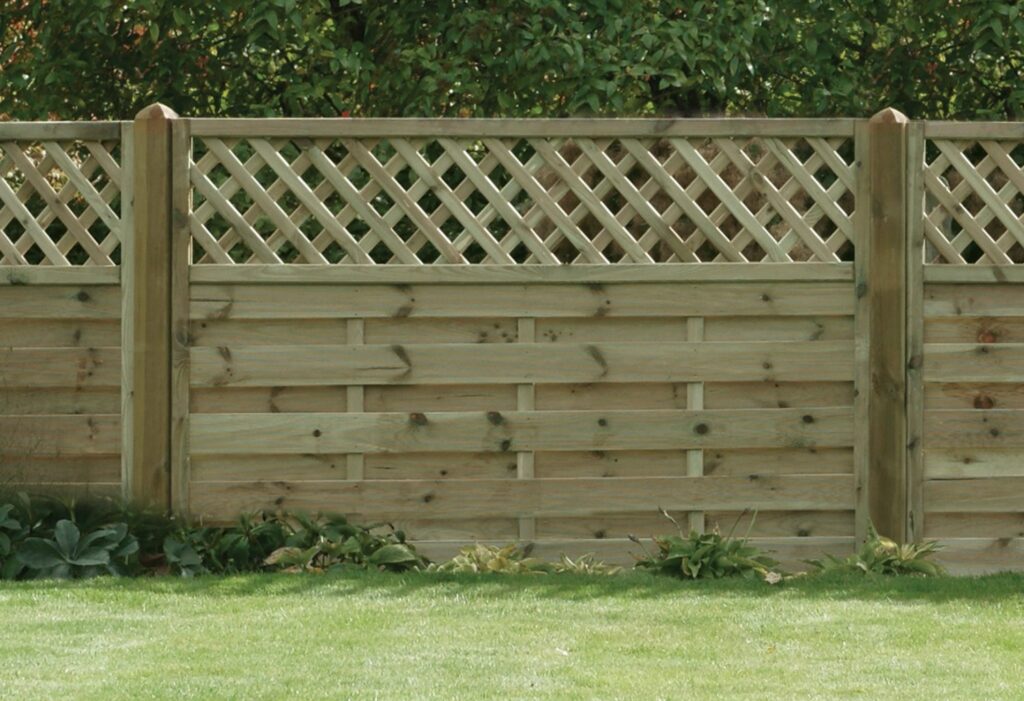
5. Factors to Consider When Choosing a Lattice Fence
5.1 Durability
When choosing a lattice fence, it’s important to consider the durability of the materials used. Different materials offer varying levels of durability and resistance to factors such as weather, insects, and rot. Wood lattice fences, while offering a natural and aesthetically pleasing look, require regular maintenance to ensure their longevity. Vinyl lattice fences, on the other hand, are highly durable and low-maintenance, making them suitable for homeowners looking for hassle-free options. Metal lattice fences offer excellent durability but may require more regular upkeep to prevent rust or other forms of corrosion.
5.2 Maintenance requirements
Maintenance requirements play a crucial role in the long-term performance of a lattice fence. Wood lattice fences require periodic staining, sealing, and occasional repairs to maintain their appearance and prevent rotting or warping. Vinyl lattice fences are virtually maintenance-free, only requiring occasional cleaning to remove dirt or debris. Metal lattice fences may require regular repainting or rust prevention treatments to ensure their longevity. Consider your willingness and ability to perform regular maintenance tasks when choosing the material for your lattice fence.
5.3 Cost considerations
Another important factor to consider when choosing a lattice fence is the cost. The cost of a lattice fence will vary depending on the material used, the design complexity, and the size of the fencing project. Wood lattice fences are generally more affordable compared to vinyl or metal options. Vinyl lattice fences are typically of moderate cost, offering a balance between affordability and longevity. Metal lattice fences tend to be more expensive due to the higher cost of materials and potential customization options. Consider your budget and the long-term value that each material offers when making your decision.
6. Installation and Maintenance of Lattice Fences
6.1 Preparing the site
Before installing a lattice fence, it is important to properly prepare the site. This involves clearing the area of any debris or vegetation, marking the fence line, and ensuring that the ground is level. Measure and mark the desired fence height and ensure that there are no underground utilities or obstructions in the path of the fence.
6.2 Setting the posts
The next step in installing a lattice fence is setting the posts. Dig post holes using a post hole digger, ensuring that the holes are deep enough to provide stability for the fence. Place the posts in the holes, ensuring they are plumb and level. Use concrete to secure the posts in place and allow it to cure before proceeding to the next step.
6.3 Installing the lattice panels
Once the posts are set, it is time to install the lattice panels. Measure the dimensions of the fence section and cut the lattice panels accordingly. Attach the lattice panels to the posts using screws or other appropriate fasteners. Ensure that the panels are securely attached and that the overall fence structure is stable. Finish the installation by adding any additional trim or framing as desired.
In terms of maintenance, regular inspections of the lattice fence are recommended to identify any issues such as loose panels or damage. Clean the lattice panels periodically to remove dirt or debris buildup using a brush or a mild detergent solution. If any lattice panels become damaged, they can be removed and replaced as needed.
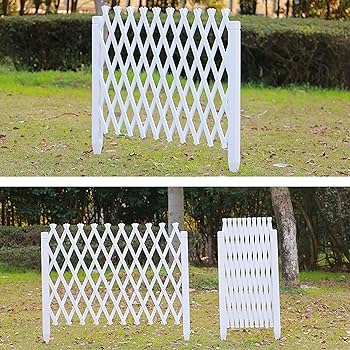
7. Improve Privacy with Lattice Fences
7.1 How lattice fences enhance privacy
Lattice fences are an excellent option for enhancing privacy while still allowing some visibility and airflow. The crisscrossed design of the lattice panels partially obstructs the view from outside, creating a sense of privacy within the enclosed area. However, the open spaces within the lattice structure still allow light and air to pass through, creating a less closed-off and claustrophobic feel compared to solid panel fences. By strategically placing lattice fences in areas where privacy is desired, you can create secluded and intimate spaces within your property.
7.2 Placement and height considerations
When using lattice fences to enhance privacy, it is important to consider the placement and height of the fence. Determine the areas where privacy is the most important and position the lattice fence accordingly. For example, you may want to install lattice fences on the sides of your property where you have close neighbors or in areas where you want to create privacy screens, such as around a patio or pool. Additionally, consider the height of the lattice fence to ensure that it provides the desired level of privacy without compromising the overall aesthetic or blocking too much sunlight.
7.3 Combining lattice with other materials
To further enhance privacy, you can combine lattice with other fence materials. For example, you can install lattice panels on top of a solid panel or picket fence to create a visually appealing and functional combination. This allows you to maintain privacy at the lower portion of the fence while still enjoying the airy and decorative elements of the lattice design. Combining lattice with other materials also gives you the opportunity to add different textures and visual interest to your fence structure.
8. DIY Lattice Fence Projects
8.1 Building a lattice privacy screen
Building a lattice privacy screen is a popular DIY project that can be easily accomplished with basic tools and materials. Start by determining the dimensions of the privacy screen and gathering the necessary materials, such as lattice panels, lumber, and screws. Construct a frame using the lumber and attach the lattice panels to the frame. Once the privacy screen is assembled, it can be installed in various locations, such as on top of a balcony railing, along the edge of a patio, or as a standalone structure in your yard.
8.2 Creating a lattice trellis
A lattice trellis is an excellent way to support climbing plants and add a decorative element to your garden or outdoor space. To create a lattice trellis, start by constructing a frame using lumber and securing it in the desired location. Attach the lattice panels to the frame, creating a grid-like structure for the climbing plants to grow on. Install the lattice trellis against a wall, along a fence, or as a freestanding structure to provide support and visual interest for your plants.
8.3 Design ideas for lattice garden fences
Lattice garden fences offer endless design possibilities to enhance the beauty of your garden. Consider incorporating lattice fences as garden borders, creating separate sections for different types of plants or flower beds. Utilize lattice panels as decorative accents on gates or as inserts within traditional garden fences. You can also experiment with different lattice patterns, such as diagonal or square lattice, to create unique visual effects. The versatility of lattice fences allows you to customize your garden design according to your personal preferences and the specific needs of your plants.
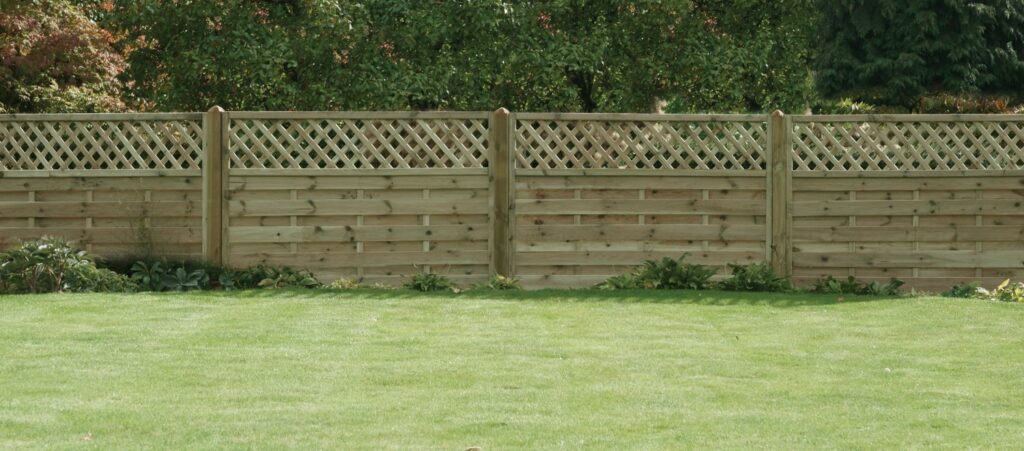
9. Maintenance and Care Tips for Lattice Fences
9.1 Cleaning and washing
Regular cleaning and washing are essential to maintain the appearance of lattice fences. Remove any dirt or debris buildup by gently scrubbing the lattice panels with a brush or sponge. For more stubborn stains, use a mild detergent solution and rinse thoroughly with water. Avoid using harsh chemicals or abrasive materials that could damage the lattice panels. Regular cleaning will help prevent discoloration and keep your lattice fence looking fresh and attractive.
9.2 Painting or staining
Depending on the material of your lattice fence, you may consider painting or staining it for added protection and aesthetic appeal. Wood lattice fences can be painted or stained to enhance their durability and blend with your property’s color scheme. Vinyl lattice fences typically do not require painting, as they come in various pre-colored options. If desired, vinyl lattice fences can be painted using a high-quality exterior paint designed for vinyl surfaces. Before painting or staining, ensure that the lattice panels are clean and free of any dirt or debris.
9.3 Repairing damaged lattice panels
Over time, lattice panels may become damaged due to various factors, such as inclement weather or accidental impacts. If a lattice panel becomes cracked or broken, it can usually be repaired or replaced without replacing the entire fence. To repair a damaged lattice panel, remove the panel from the fence structure and assess the extent of the damage. If the damage is minimal, it may be possible to fix the panel using glue or adhesive. For more severe damage, it is recommended to replace the entire panel with a new one to ensure structural integrity and aesthetic consistency.
10. FAQ about Lattice Fences
10.1 How much does a lattice fence cost?
The cost of a lattice fence will depend on various factors, including the material used, fence dimensions, and any additional customization. On average, a lattice fence can cost between $20 to $40 per linear foot. Keep in mind that this is just an estimate, and prices may vary based on location and other specific factors.
10.2 Can I install a lattice fence myself?
Yes, lattice fences can be installed as a DIY project. However, it is important to have basic knowledge of fence installation techniques, as well as the necessary tools and materials. Always follow manufacturer instructions and local building codes when installing a lattice fence. If you are unsure or not comfortable with the installation process, it is recommended to hire a professional for assistance.
10.3 How long does a lattice fence last?
The lifespan of a lattice fence will depend on several factors, including the material used and the maintenance it receives. Wood lattice fences, if properly maintained, can last around 20 to 30 years. Vinyl lattice fences can have a lifespan of 30 years or more, thanks to their durability and resistance to rot and insects. Metal lattice fences, with regular maintenance and proper treatment, can also last for several decades.
10.4 Can a lattice fence withstand strong winds?
Lattice fences, like any other fence type, may be susceptible to damage in strong winds. The degree of wind resistance will depend on various factors, such as the material used, the design of the lattice panels, and the installation technique. In general, lattice fences with tighter lattice patterns and robust construction tend to withstand wind better. It is also advisable to choose sturdy materials and ensure a proper installation to enhance the wind resistance of the fence.
10.5 Do lattice fences require regular maintenance?
The maintenance requirements of a lattice fence will vary depending on the material used. Wood lattice fences require regular maintenance, including staining, sealing, and occasional repairs to ensure their longevity. Vinyl lattice fences are low-maintenance and only require periodic cleaning to remove dirt or debris. Metal lattice fences may require repainting or rust prevention treatments to maintain their appearance and prevent corrosion. Regular inspections are recommended for all types of lattice fences to identify any issues and address them promptly.
10.6 Can a lattice fence be used as a sound barrier?
While lattice fences can provide some degree of sound dampening due to the crisscrossed design and material density, they are not typically used as primary sound barriers. If sound reduction is a significant concern, combining lattice panels with other materials, such as solid panels or mass-loaded vinyl, can help enhance the fence’s soundproofing capabilities. It is also important to consider the specific sound requirements and consult professionals if maximum sound reduction is desired.
10.7 Are lattice fences difficult to clean?
Lattice fences are relatively easy to clean, especially if made of materials like vinyl or metal that do not require extensive maintenance. Regular cleaning with a brush or sponge, along with occasional washing with a mild detergent solution, should be sufficient to keep lattice fences looking clean and attractive. However, it is important to avoid using abrasive materials or harsh chemicals that could damage the lattice panels.
10.8 How tall can a lattice fence be?
The height of a lattice fence will depend on personal preference, local building codes, and the specific requirements of your property. Lattice fences typically range from 3 to 8 feet in height, although taller fences can be custom-built to suit individual needs. It is important to check local regulations and obtain any necessary permits before installing a lattice fence to ensure compliance with height restrictions.
10.9 Can I combine lattice with other fence types?
Yes, lattice fences can be combined with other fence types to create unique designs and enhance functionality. For example, you can integrate lattice panels into a solid panel or picket fence to create a visually interesting combination of privacy and decorative elements. You can also use lattice as a decorative accent on gates, pergolas, or as inserts within larger fence structures. The versatility of lattice fences allows for creativity in combining different materials and styles to achieve the desired aesthetic and functionality.
10.10 Are lattice fences suitable for commercial properties?
Lattice fences can be suitable for commercial properties depending on the specific requirements and desired aesthetic. They can be used as decorative accents, partition walls, or privacy screens in commercial settings such as restaurants, hotels, and outdoor venues. However, it is important to consider factors such as security, maintenance requirements, and local regulations when choosing a lattice fence for a commercial property. It is recommended to consult with professionals and consider the specific needs and goals of the commercial establishment before making a decision.
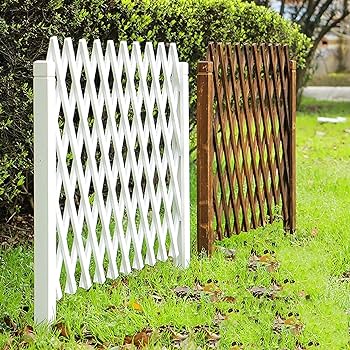
Question and Answer Section:
-
Q: Can lattice fences be easily customized to fit unique property dimensions? A: Yes, lattice fences can be easily customized to fit unique property dimensions. Lattice panels can be cut to the desired size and shape to ensure a proper fit within the available space.
-
Q: Can lattice fences be painted different colors to match the exterior of a property? A: Yes, depending on the material, lattice fences can be painted different colors to match the exterior of a property. Wood lattice fences can be stained or painted, while vinyl lattice fences are available in various pre-colored options or can be painted using appropriate exterior paint.
-
Q: Are lattice fences suitable for coastal areas with high salt exposure? A: While wood lattice fences may be susceptible to damage in coastal areas with high salt exposure, vinyl and metal lattice fences are more resistant to corrosion and can withstand such conditions better. It is recommended to choose materials that are specifically designed for coastal environments.
-
Q: Can lattice fences provide security in addition to privacy? A: While lattice fences provide some level of privacy, they may not offer the same level of security as solid panel or metal fences. However, lattice fences can be combined with other materials, such as adding a solid panel at the lower portion, to enhance security while maintaining the lattice design for aesthetic appeal.
-
Q: Can lattice fences be installed on uneven terrain? A: Yes, lattice fences can be installed on uneven terrain. However, it may require additional planning and adjustment during the installation process to ensure that the fence is level and properly secured. It is important to prepare the terrain and make necessary adjustments to the posts to accommodate the unevenness.
-
Q: Can lattice fences be installed on top of existing fences? A: Yes, lattice fences can be installed on top of existing fences as a decorative element or to enhance privacy. This provides an opportunity to add visual interest and versatility to the existing fence structure.
-
Q: Can lattice fences be used indoors as decorative partitions or room dividers? A: Yes, lattice fences can be used indoors as decorative partitions or room dividers. The unique and visually appealing lattice design adds a decorative element to indoor spaces while maintaining an open and airy atmosphere.
-
Q: Are lattice fences suitable for enclosing small pets or containing them within a specific area? A: Lattice fences may not be suitable for containing small pets, as the open spaces within the lattice panels can allow the pets to escape. Solid panel or picket fences would provide a more secure option for containing small pets within a specific area.
-
Q: Can lattice fences be installed on sloped surfaces? A: Lattice fences can be installed on sloped surfaces, but it may require additional planning and adjustments during the installation process. The lattice panels may need to be cut or angled to follow the slope of the terrain.
-
Q: Are lattice fences suitable for noise reduction in urban areas? A: While lattice fences can provide some degree of sound dampening, they may not be the most effective option for noise reduction in urban areas. Combining lattice panels with other materials, such as mass-loaded vinyl or solid panels, can enhance the fence’s ability to reduce noise. However, for maximum noise reduction, specifically designed sound barrier fences may be more appropriate.
